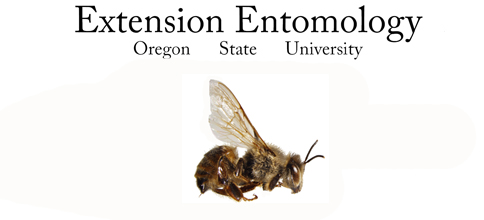Honey Bee Diagnostic Services
American Foulbrood
Causative Agent: Bacillus larvae (Bacteria)
Range: Worldwide
Life cycle:
- Young larvae can be fed as few as 10 spores to be infected.
- As larvae become older they have to consume more spores to be infected. Full grown larvae rarely become infected.
- Death occurs after the cell is capped.
- The larva or pupae within the capped cell will decay in place and the tongue is often left attached to the top of the cell.
- Progression of color: white→light brown→coffee brown→dark brown/black.
- Cadaver, including the head, deflates uniformly, dries into a “scale” and strongly adheres to the bottom of the cell.
- Consistency of dead brood is soft and becomes sticky and stringy
- A single dead pupa can produce approximately 2.5 billion spores.
- Spores can remain viable for up to 50 years.
Management:
- Frequent inspections of the hives often reveal this disease before it becomes damaging.
- When the infestation is low uncapping infected individuals will result in the hive removing the infected material.
- Treatment with Oxytetracycline can kill this disease but several precautions must be taken to prevent the contamination of honey and other products.
Misconceptions:
Odor is not a reliable method of distinguishing this disease.
Irregular brood pattern can be a sign of a problem (but not necessarily American Foulbrood)
Other Useful Sites:
Information and Pictures of American, European and Sac brood Diseases
Mid-Atlantic Apiculture Research & Extension Consortium Disease Control
References used:
Root, A. I. (1990) The ABC & XYZ of bee culture 40 th ed. A.I Root Co. Medina, OH.
Morse, R.A. & R. Nowogrodzki (eds). 1990. Honey bee pests, predators and diseases . Cornell University Press Ithaca , NY .
printable pdf version
|
